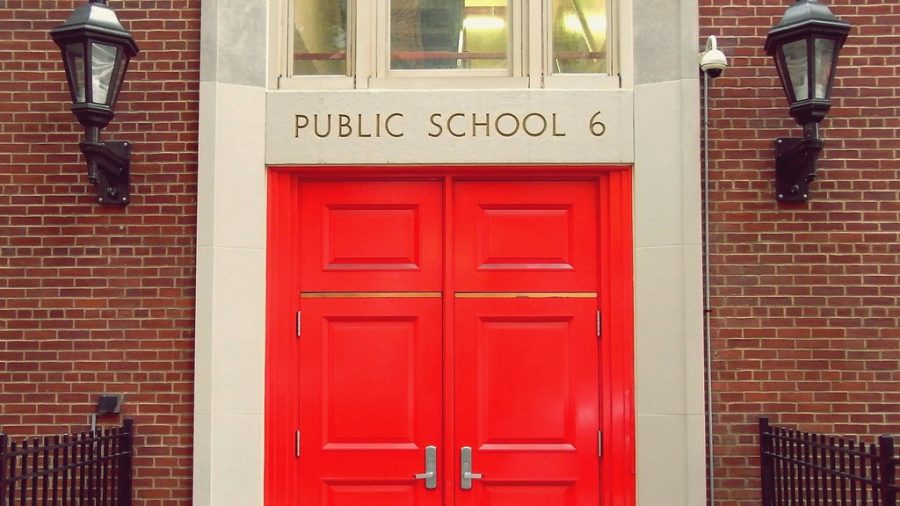Protesters call for greener infrastructure at NYC public schools
March 30, 2022
Local lawmakers, parents, students, union officials and environmental and education advocates assembled at New York City Hall to protest for greener infrastructure in New York City’s public schools last week.
The protesters called for Mayor Eric Adams’ administration to deliver on his campaign pledge to retrofit aging school infrastructure and fund the Carbon Free and Healthy Schools initiative in the city’s Fiscal Year 2023 budget.
The current infrastructure in New York City’s public schools, particularly in low-income neighborhoods, is a pressing concern to many New Yorkers, especially during the COVID-19 pandemic.
Public schools around the city are in dire need of basic maintenance and upgrading. Aging infrastructure poses a threat to the health and safety of students and staff alike.
Mayor Adams pledged on his campaign trail to address aging school infrastructure, showing his support for the CFHS initiative.
School buildings are often seen with “deteriorating rooftops and outdated electrical grids,” according to the CFHS website. Many schools don’t have adequate heating and cooling systems, and “at least a quarter of NYC classrooms lack air conditioning entirely.”
Faulty heating, ventilating and air conditioning systems in public schools may result in hazardous working conditions for students and staff.
Especially in settings with above average temperatures such as hot school kitchens or summer classrooms for those who are required to attend to compensate for learning lost due to COVID-19.
The pandemic has shed light on the inefficient ventilation systems used in the city’s public schools.
An investigation by WNYC and Gothamist found that the NYC Department of Education not only bought weaker air purifiers, but also overused these subpar air purifiers to combat the spread of COVID-19.
Out of 58,500 classrooms that New York provides ventilation data on, about 4,800 classrooms dispersed throughout 615 school buildings in the five boroughs are not equipped with proper mechanical ventilation, making open windows and portable air purifiers the only option for air circulation.
In these 4,800 classrooms, there are “23% more COVID-19 cases per students and a 29% increase in staff case rates when compared to buildings with stronger ventilation, such as HVAC systems,” according to the WNYC and Gothamist investigation.
The aging infrastructure in public schools is not only an issue for school students and staff, but a global issue due to the carbon waste being created by school buildings.
“Buildings, including public schools, are responsible for 30% of the carbon emissions in New York state,” Doreen Harris, president and CEO of the New York State Energy Research and Development Authority said.
These carbon emissions are harmful to the environment because they increase the greenhouse effect by trapping heat in the Earth’s atmosphere, which ultimately results in changes to the world’s climate.
Another contributor to the greenhouse effect is outdated and inefficient electric grids used in the majority of school buildings.
This issue is also being addressed at the state level, as Gov. Kathy Hochul created the Clean Green Schools initiative in September of 2021, allocating $59 million to facilitate the reduction of emissions and the improvement of air quality in over 500 public and private schools located in underserved communities in the state.
Low income and majority Black, Hispanic and Latino communities are disproportionately affected by failing infrastructure and environmental injustices.
“Environmental racism is real and Black and Brown communities are likely to have the highest asthma rates, likely to have environmental-related diseases,” Shirley Aldebol, executive vice president and director of Schools Division for SEIU 32BJ said.
“So empowering people through the schools starts with our kids to be in an environment where they’re healthy and safe and where carbon emissions are reduced.”
According to the protesters gathered at City Hall, the CFHS initiative will retrofit aging infrastructure, reduce energy costs, improve energy efficiency, create thousands of green union jobs and help combat environmental racism.
This initiative can potentially allow the city’s Department of Education to save $250 million each year, create over tens of thousands of new jobs and reduce carbon emissions by 75,000 tons.
Many believe that now is the best time to move forward with this initiative, as it aligns with the Biden administration’s dedication to improve infrastructure since taking office.








